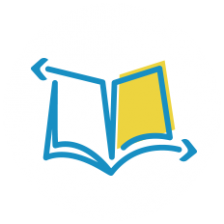Beginning your career as special education teacher can be overwhelming. There are many new procedures and processes to learn, lesson plans to create, individualized education plans (IEPs) to read and students to get to know. While you will have many kinds of students in your class, it is likely that you will have a student who uses augmentative and alternative communication (AAC). Interacting with someone who doesn’t communicate in a typical way can also be overwhelming. You might have limited experience in working with students who use AAC, and it might not be clear how to best include these students. Here are few things to keep in mind that might make it a little easier.
Start With Inclusion
First, plan to include the student who uses AAC just like all your other students. This is the best piece of advice I have. If you take ownership of the student, you will have an easier time thinking of ways to include him or her.
Seek Help From a Speech-language Pathologist
Next you should make friends with the speech-language pathologist (SLP) at your school. He or he should be your go-to person when you have questions about your student’s communication device. Ask the SLP to show you how to use the device and consider co-teaching with your SLP to best meet your student’s educational needs. It could also be beneficial to have a standing meeting with the SLP so that you have some protected time to plan together and hash out any problems that arise.
Plan Ahead
Finally, plan ahead—way ahead. Due to the amount of time it can take students who use AAC to formulate questions, answers and comments, it can be beneficial to send assignments, plans and projects home with the student in advance. This will make is easier for the student to participate in class and complete work on time.
Top Ten Tips for Being an Effective Communication Partner
In addition to including a student who uses AAC, you will want to be the most effective communicator possible. Communicating with someone who uses an AAC device is not always intuitive; but, if you follow the tips below, your interactions will be more productive and meaningful.
- Presume competence. You are not doing any harm by assuming that the student is fully capable. However, you could be doing harm by not keeping your expectations high.
- Speak directly to the child or young adult who uses AAC, not the person who might be assisting him or her.
- Provide plenty of time for the person to respond to your comment or question. The silence can feel uncomfortable at first, but waiting will become more natural over time.
- Avoid doing anything else while waiting for a response. Give them your full attention while talking with them.
- Remember to use speech and language that’s respectful of an individual’s age when talking with someone who uses AAC.
- Do not guess what the person is trying to say unless he or she has asked you to do so. Each person who uses AAC communicates differently; they might want you to help them construct their message, but they might not. It is perfectly fine to ask them how they wish to communicate with you.
- Before touching or using the AAC device, be sure to ask the person if it is all right to do so.
- Make sure that you are using a variety of communicative functions beyond yes-no questions. Ask open-ended questions, make comments, protest, etc. This not only serves as a language model for the person who uses AAC, but also makes conversations feel less like interviews.
- Use a “least to most” prompting hierarchy. This means to begin with the least-intrusive prompts and increase the level of prompting as needed.
- Honesty is always your best policy. If you are unsure if the person using AAC has understood you, have misunderstood the person using AAC or aren’t able to wait long enough for a response, please let the person know right away. It does not do anyone any good to pretend or be dishonest.







Leave a Reply
Your email address will not be published.